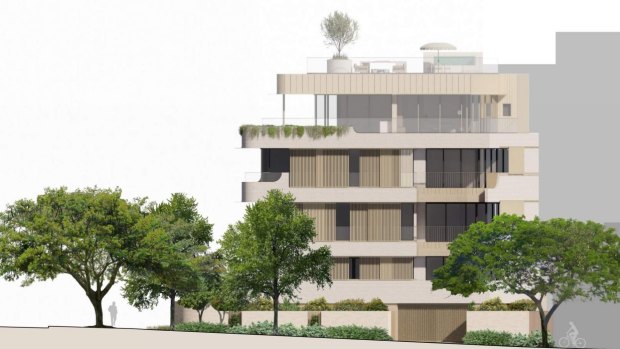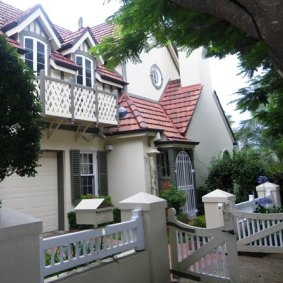This was published 2 years ago
Plans for New Farm mansion to tower over neighbours
Plans for a contentious mansion on a New Farm block near the Brisbane River, which would tower over a heritage-listed riverside home, have been resubmitted despite the owner’s court victory approving a previous design.
Brisbane City Council initially refused a proposal to build the mammoth home, on land owned by David Edlin, largely because the six-storey, 23.8-metre building was believed to be too big.

Amended plans for a mansion at 3 Riverview Court, New Farm.Credit: Brisbane City Council DA
Next door was the Moorings, a heritage-listed house built in 1934. Owner Boon Kua was one of several neighbours who objected to the original proposal.
In their submission to the council, Kua’s lawyers noted single dwellings avoided impact assessment, which avoided the need for public notification and the associated appeal rights.
“As the application is for a single dwelling house it is code assessable, whereas the same building if it were a multiple dwelling would have been impact assessable due to building height,” they said.

The heritage-listed Moorings, next door to the proposed development.Credit: Brisbane City Council
“Some of the floors are essentially self-contained residences with their own kitchens, bathrooms and meals/living spaces.
“The only reason they are not defined as separate dwellings is that they don’t have ‘facilities for washing clothes’ shown on the plans, but this could be achieved with minor modifications to convert a powder room or plumb a washer/dryer into kitchen facilities.”
In rejecting the proposal, the council shared those concerns.
“According to the internal layout, the proposed building appears to be capable of being used as a separate self-contained dwelling with separate households, considering that some levels contain its food preparation facilities, bath or showers, toilets and a wash basin with the ability to have facilities for washing clothes,” the council found in its January 2022 refusal.
“A shared laundry room within the building is not considered sufficient to demonstrate that different levels are not capable of being used as a self-contained residence.”
Under the local planning scheme, which lists the site as being in a medium-density residential zone, such a height for a unit block – let alone a house – would not be allowed.
Council zoning for the site allowed standalone homes to reach three storeys with a height of 11.5 metres. The proposal was more than twice that height.
Unsurprisingly, the council baulked at its scale.
“The development does not align with the community expectations about the number of storeys to be built for a dwelling house, which is expected to be two or three storeys according to existing dwelling houses in the locality and as evidenced in the submissions received for this application,” the council said.
Following the council’s refusal, Rokeby Property Development appealed to the Planning and Environment Court, which in January ordered the approval of an amended application, which reduced its height by about two metres.
This week, Rokeby submitted another amended development application for the project, with what it described as “minor” changes.
Although a storey had been removed, the height of the building remained the same, as floor-to-ceiling heights had been increased.
A council spokeswoman said the Planning Court’s decision did not compel the council to approve the amended DA, which would be assessed in due course.
Comment was sought from Rokeby Property Development.